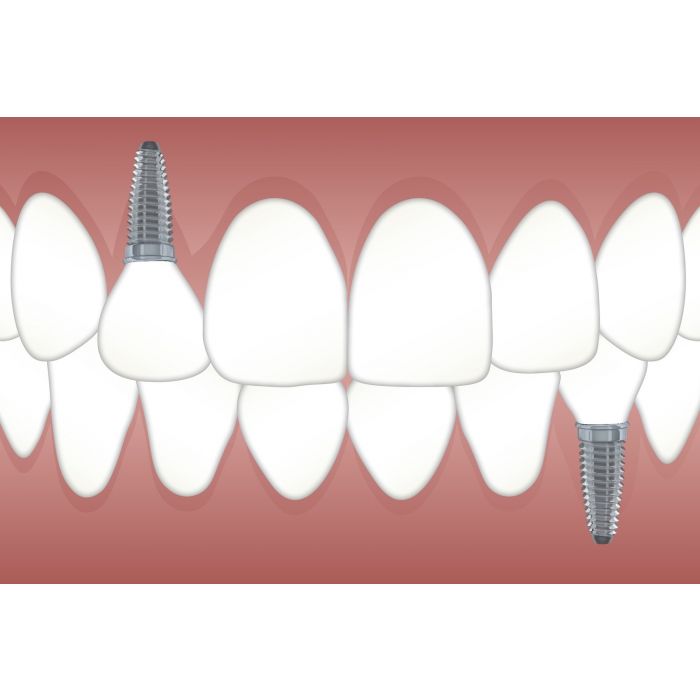Study confirms students providing high quality implant care
Tarwinder Rai - 9 December 2020

Over a 10-year period, only one implant failed.
Patients receiving dental implants from School of Dentistry dental students can rest assure they're receiving high quality dental care.
A recent study published in the Journal of Canadian Dental Association shows that over the course of a 10-year period only one implant failed and required removal out of a possible 299 implants - giving the student-placed implants a 99.7% survival rate.
"Our patients can be confident that their implant procedure will be successful," says Bernard Linke, co-author on the study and prosthodontic clinical professor at the school. "We are providing a procedure that has documented, long-term evidence of success."
The study, Retrospective analysis of the survival of dental implants placed by dental students: A 10-year chart review, was aimed at determining and analyzing the survival rates of dental implants being placed by dentistry students after seeing a high success rate in the surgical procedure says Linke.
"We were noticing in the clinic that student-placed and restored implants were doing very well over time. However, we wanted to take this one step further to see if that in fact was the case and initiated the study," says Linke.
As part of the study patient charts from January 1, 2007 to July 31, 2017 were reviewed. These patients either receive single or multiple dental implants. Additional factors accounted for in the analysis included the patient's age, sex, American Society of Anesthesiologists (ASA) class and implant site.
During the study, 299 implants were placed in 189 patients, 77 males and 112 females with an average age of 52. Each implant was surgically placed by a fourth-year dental student supervised by either oral and maxillofacial surgeons, periodontists or prosthodontists at the school.
Linke says the high success rate that patients experience is thanks to the expertise of the clinical team at the school.
"Our students are receiving one-on-one experience with the oral surgeon and are becoming competent in their skills. Although the students are being closely supervised, the fact is they are surgically placing their first implant. The combination of careful patient selection, prosthetically planned restorations with surgeon input, and then close supervision with follow-up lends itself to a successful procedure," added Linke. "All these factors influence the likelihood of the implant surviving."
This study was completed by Mitchell Naito, a general practice resident and Clinical Instructor at the School of Dentistry, and oral and maxillofacial surgery graduate program resident in Louisiana; Kevin Lung, Certified specialist in oral and maxillofacial surgery, and Clinical Professor and Director of the Implant Surgery Clinic at the school; and Bernard Linke, Clinical Professor and restorative dentistry lead at the school.